Kissing Data Symphony








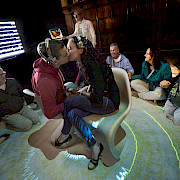


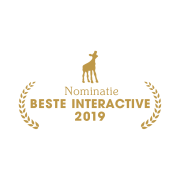


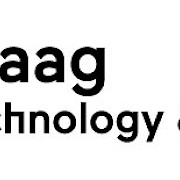
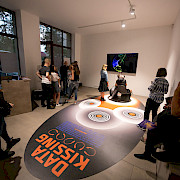


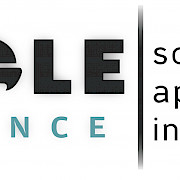




AWARDS
TASIE 2019 Award, National Museum of China
/ Art & Science Innovation Prize Wu Guanzhong by Tsinghua University Beijing
NFF Netherlands Film Festival, Golden Calf Nomination Interactive 2019
GAAC Global Art & A.I. Competition 2019 Award China
EMARE /EMAP Award, Europe Media Art Platform - Creative Europe Programme of the European Union
World-première:
Multi-person Brain Computer Interface (Multi-BCI) for a distributed kiss - with EEG, AI & Emotional Intelligence.
A Communal Kiss Experience
Touching takes place on the skin, in the brain and in the imagination.
Can we collectively share a kiss?
Can we digitally distribute our kisses and co-create a worldwide Kissing Data Symphony?
Kissing Data Symphony builds on EEG KISS 2016 (click here).
In KDS, both Kissers and Spectators wear EEG headsets:
their brain activity data of seeing and feeling a kiss are merged,
in a shared data-visualisation and a soundscape.
KDS simultaneously records both the Kissers' brain activity while kissing, and the Spectators' (Co-Kissers) mirror-neuron activity of watching and of their imagination resonating in their brains. Together they co-create a real-time streaming communal datavisualisation and sonification confluent in a Shared Reflexive Datascape.
Ritual
The KDS ritual, that is carefully hosted by the artists, has been performed worldwide, with specific attention to (neuro-)diverse and inclusive cultural and gender identities.
This tender ritual was developed with participants in an iterative process. It exists of a set of actions, that include listening, kissing, watching, autonomy of moving in time and space and sensing proximity; of taking responsibility and care; and a shared dialogue. It invites participants to meet via a shared synesthetic neuro-feedback route, and to explore distributed, yet interdependent corporeal sensations.
Experience
The public performance of kissing and caressing, with the emerging EEG data traces, have shown to evoke tender, strange, unfamiliar yet emphatic relations among participants with each other - and with the visualized and sonified data. Participants explore manifold personal feelings, interpretations and connections with the EEG data-traces and each other, fueled with personal memory of intimate experience of kissing, or caressing each other's faces.
Kisser: “I had the feeling that my kiss was borne by the people around me."
Co-Kisser: “I felt like being part of their kiss, very intimate..."
Find participant reactions on: vimeo.com/481274422 and Artists Texts.
"In science, digital data represents things. In art, digital data points at itself for reflection."
Free to Thimoty Morton 2018.
Data patterns and privacy; meaning and mystification.
Critically, Lancel and Maat created a Multi-BCI for intimate, shared corporeal (brain) experience in merging realities. While increasingly, use of Multi-BCI's commercial BCI's focusses on group-emotions for AI and Big Data, control and automation, the KDS Reflexive DataScape provokes awareness and dialogue to reclaim agency for public data-interpretation and authorship. Instead of trusting on data to direct, represent and interpret our (brain) activities, KDS explores a mode of living with data patterns as Co-Actors for a new form of shared meaning making through Storytelling. The artists establish an Aesthetic distance (Kwastek 2016) through a form of physical and intimate datafication that ambiguously hovers between familiar clinical recordings and unfamiliar data signals - mystifying the secrecy of a kiss.
Future
In a broad societal context, KDS has shed new light on interdisciplinary research into Art and Media Theory, and Social Studies; AI Artificial Intelligent Emphatic Design (for data collections, pattern recognition, and critical shared data appropriation); Interaction and Participatory Complex System design. It has stimulated dialogue on a shared sense of reciprocity, vulnerability, responsibility and empathy, in public spaces of digital cultures and merged realities.
The artwork's next development expands its focus on human and non-human (data) connections to plants and flowers, see here.